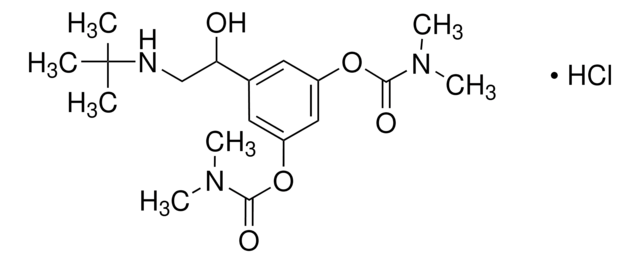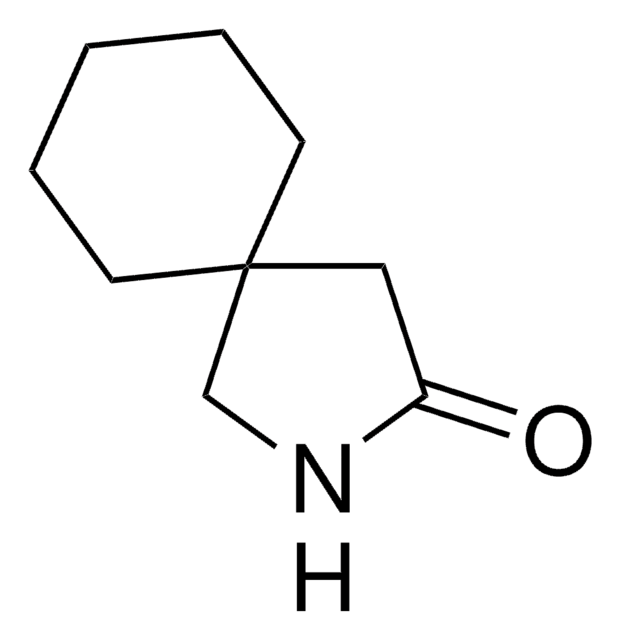40409
3,7-Dimethyluric acid
≥95.0% (HPLC)
Synonym(s):
3,7-Dimethyl-2,6,8-trihydroxypurine
Sign Into View Organizational & Contract Pricing
All Photos(1)
About This Item
Empirical Formula (Hill Notation):
C7H8N4O3
CAS Number:
Molecular Weight:
196.16
Beilstein:
218966
MDL number:
UNSPSC Code:
12352100
PubChem Substance ID:
NACRES:
NA.22
Recommended Products
Assay
≥95.0% (HPLC)
mp
≥300 °C
SMILES string
CN1C(=O)NC(=O)C2=C1NC(=O)N2C
InChI
1S/C7H8N4O3/c1-10-3-4(8-6(10)13)11(2)7(14)9-5(3)12/h1-2H3,(H,8,13)(H,9,12,14)
InChI key
HMLZLHKHNBLLJD-UHFFFAOYSA-N
Looking for similar products? Visit Product Comparison Guide
General description
3,7-Dimethyluric acid (3,7-DMU, 3,7-Dimethyl-2,6,8-trihydroxypurine), a purine derivative, is a dimethylated uric acid. It has a pyrimidine ring fused to an imidazole ring. Mechanism of the transformation of theobromine to 3,7-DMU in rat liver microsomal incubations has been investigated.
3,7-Dimethyluric acid is a primary theobromine (TB; 3,7-dimethylxanthine) metabolite. Electrochemical oxidation of 3,7-dimethyluric acid gives two voltammetric oxidation peaks (Ia and IIa) at a pyrolytic graphite electrode in aqueous solution.
Packaging
Bottomless glass bottle. Contents are inside inserted fused cone.
related product
Product No.
Description
Pricing
Storage Class Code
13 - Non Combustible Solids
WGK
WGK 3
Flash Point(F)
Not applicable
Flash Point(C)
Not applicable
Personal Protective Equipment
dust mask type N95 (US), Eyeshields, Gloves
Choose from one of the most recent versions:
Already Own This Product?
Find documentation for the products that you have recently purchased in the Document Library.
Miquel Rojas-Cherto et al.
Analytical chemistry, 84(13), 5524-5534 (2012-05-23)
Multistage mass spectrometry (MS(n)) generating so-called spectral trees is a powerful tool in the annotation and structural elucidation of metabolites and is increasingly used in the area of accurate mass LC/MS-based metabolomics to identify unknown, but biologically relevant, compounds. As
A Lelo et al.
Xenobiotica; the fate of foreign compounds in biological systems, 20(8), 823-833 (1990-08-01)
1. The involvement of glutathione (GSH) and cytochrome P-450 in the conversion of theobromine to 6-amino-5-(N-methylformylamino)-1-methyluracil (3,7-DAU) and 3,7-dimethyluric acid (3,7-DMU) has been investigated in rat liver microsomal incubations. 2. The ratio of formation of 3,7-DAU to 3,7-DMU increased with
Oxidation chemistry of 3, 7-dimethyluric acid: electrochemical and peroxidase-catalyzed mechanisms.
Chen TR and Dryhurst G.
J. Electroanal. Chem. Interfac. Electrochem., 177(1), 149-165 (1984)
Binxing Zhou et al.
BMC microbiology, 20(1), 269-269 (2020-08-29)
Methylxanthines, including caffeine, theobromine and theophylline, are natural and synthetic compounds in tea, which could be metabolized by certain kinds of bacteria and fungi. Previous studies confirmed that several microbial isolates from Pu-erh tea could degrade and convert caffeine and
S Gates et al.
British journal of clinical pharmacology, 47(3), 299-305 (1999-04-24)
The plasma clearance of theobromine (TB; 3,7-dimethylxanthine) is known to be induced in cigarette smokers. To determine whether TB may serve as a model substrate for cytochrome P450 (CYP) 1A2, or possibly other isoforms, studies were undertaken to identify the
Our team of scientists has experience in all areas of research including Life Science, Material Science, Chemical Synthesis, Chromatography, Analytical and many others.
Contact Technical Service







